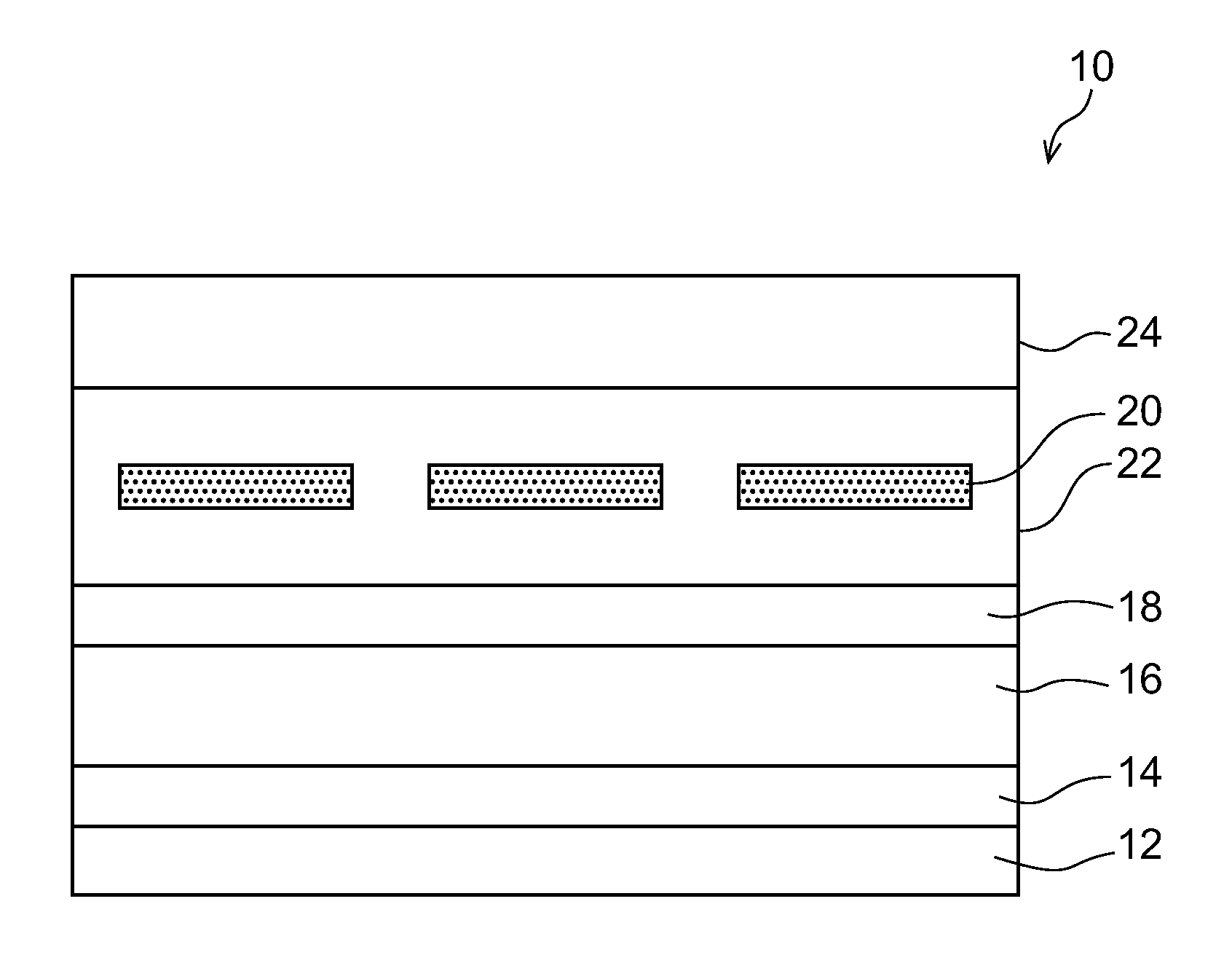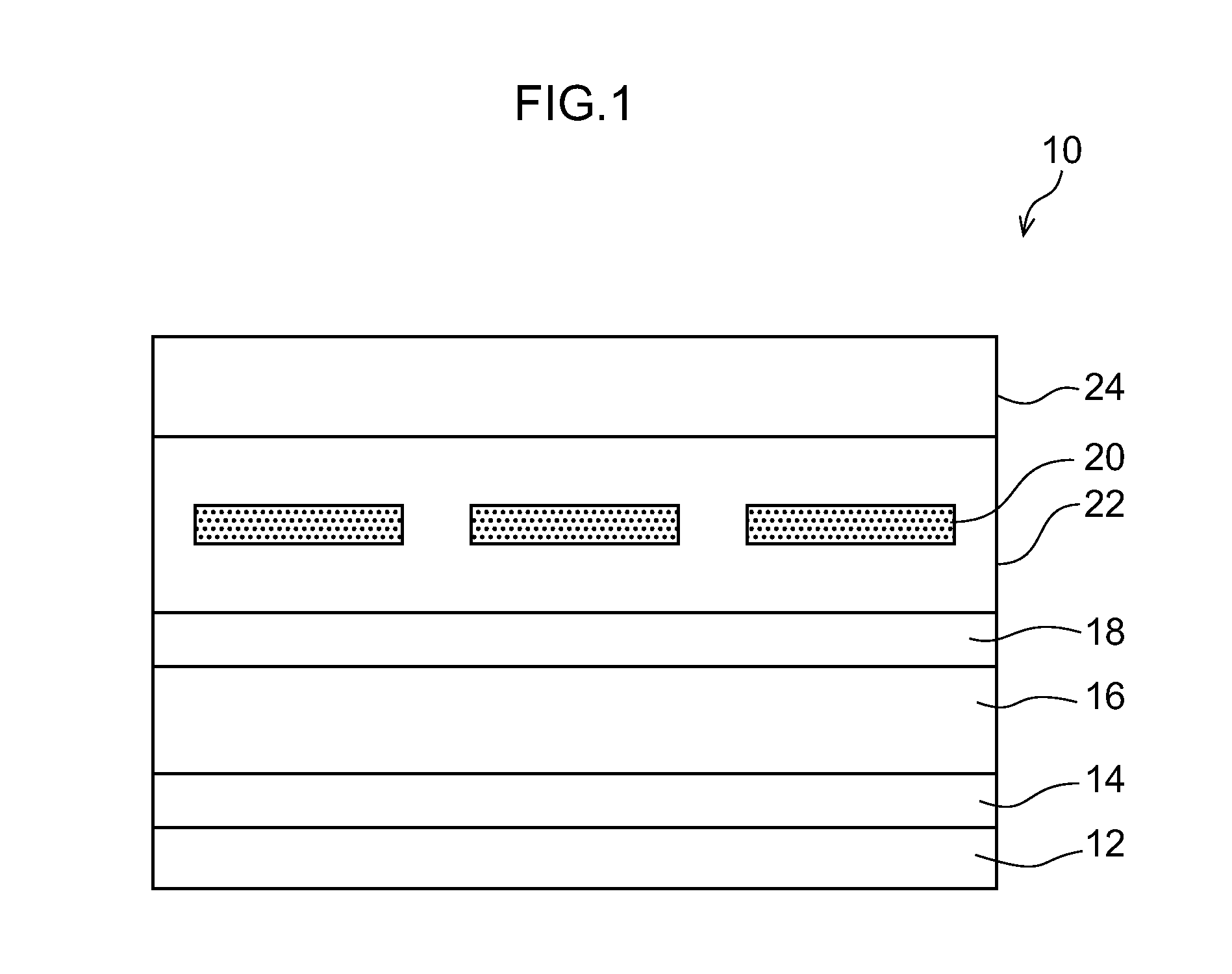Polymer sheet for solar cell back sheet, method for producing the same, and solar cell module
a technology of solar cells and polymers, which is applied in the direction of transportation and packaging, coatings, layered products, etc., can solve the problem of liable peeling of fluorine-containing polymer layers
- Summary
- Abstract
- Description
- Claims
- Application Information
AI Technical Summary
Benefits of technology
Problems solved by technology
Method used
Image
Examples
example 1
Production of Substrate PET-1
[0438]—Synthesis of Polyester—
[0439]A slurry of 100 kg of high purity terephthalic acid (manufactured by Mitsui Chemicals, Inc.) and 45 kg of ethylene glycol (manufactured by Nippon Shokubai Co., Ltd.) was sequentially supplied over 4 hours into an esterification reaction tank which had been previously charged with about 123 kg of bis(hydroxyethyl) terephthalate and was maintained at a temperature of 250° C. and at a pressure of 1.2×105 Pa. Even after the completion of supply, the esterification reaction was performed for another one hour. Thereafter, 123 kg of the esterification reaction product thus obtained was transferred to a polycondensation reaction tank.
[0440]Subsequently, ethylene glycol was added to the polycondensation reaction tank to which the esterification reaction product was transferred, in an amount of 0.3% by mass based on the mass of the polymer to be obtained. After stirring for 5 minutes, an ethylene glycol solution of cobalt acetat...
examples 7 to 13
[0466]Examples 7 to 13 were carried out in the same manner as in Example 1, except that the crosslinking agent that was added to the undercoat layer was changed as indicated in Table 1. However, Example 7 was a sample which did not have any crosslinking agent added to the undercoat layer.
[0467]The results obtained by carrying out the same evaluations as in Example 1 on the samples thus obtained, are presented in Table 2.
examples 17 to 22
[0470]Examples 17 to 22 were carried out in the same manner as in Example 1, except that the crosslinking agent that was added to the fluorine-containing polymer layer was changed as indicated in Table 1. However, Example 17 was a sample which did not have any crosslinking agent added to the fluorine-containing polymer layer.
[0471]The results obtained by carrying out the same evaluations as in Example 1 on the samples thus obtained, are presented in Table 2.
Comparative Example 5, Examples 23 to 29
[0472]Comparative Example 5, and Examples 23 to 29 were carried out in the same manner as in Example 1, except that the binder and the crosslinking agent of the undercoat layer or the fluorine-containing polymer layer were changed as indicated in Table 1.
[0473]The results obtained by carrying out the same evaluations as in Example 1 on the samples thus obtained, are presented in Table 2.
PUM
| Property | Measurement | Unit |
|---|---|---|
| thickness | aaaaa | aaaaa |
| thickness | aaaaa | aaaaa |
| humidity | aaaaa | aaaaa |
Abstract
Description
Claims
Application Information
 Login to View More
Login to View More - R&D
- Intellectual Property
- Life Sciences
- Materials
- Tech Scout
- Unparalleled Data Quality
- Higher Quality Content
- 60% Fewer Hallucinations
Browse by: Latest US Patents, China's latest patents, Technical Efficacy Thesaurus, Application Domain, Technology Topic, Popular Technical Reports.
© 2025 PatSnap. All rights reserved.Legal|Privacy policy|Modern Slavery Act Transparency Statement|Sitemap|About US| Contact US: help@patsnap.com



